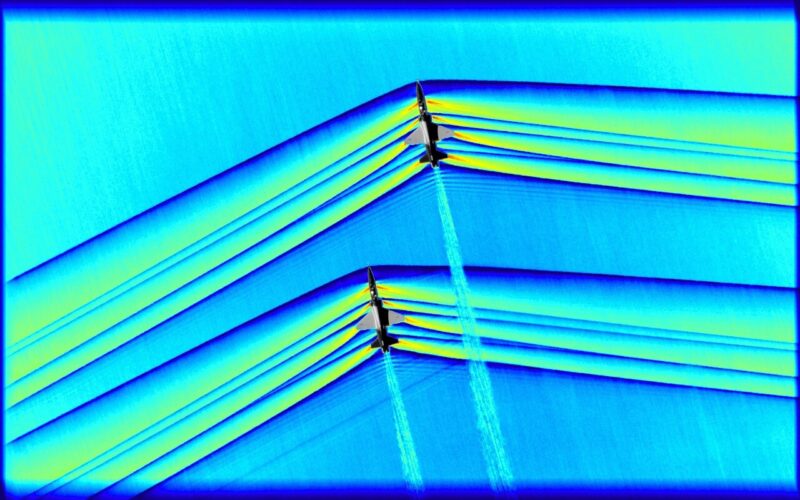NASA captures the first-ever images of the interaction of shockwaves from two supersonic aircraft in flight. Images are part of NASA’s ongoing effort to make sonic booms quieter, with hopes it could open the future to possible supersonic flight over land.
Shockwaves are rapid pressure changes produced when an aircraft exceeds the speed of sound. The problem is, that shockwaves travel away from the aircraft and merge together as they travel through the atmosphere, thus creating what is heard on the ground ‒ a sonic boom, according to NASA.
Currently there are supersonic flight restrictions over land and NASA is working on a solution: a supersonic plane (called X-59 Quiet SuperSonic Technology X-plane or X-59 QueSST) capable of producing shockwaves in a way that creates a “only a quiet rumble” on the ground, instead of sonic boom.
The images show two T-38s flying approximately 30 feet away from each other, trailing aircraft flying about 10 feet lower than the leading T-38.
“What’s interesting is, if you look at the rear T-38, you see these shocks kind of interact in a curve,” according to Neal Smith, a research engineer with AerospaceComputing at NASA Ames’ fluid mechanics laboratory. “This is because the trailing T-38 is flying in the wake of the leading aircraft, so the shocks are going to be shaped differently. This data is really going to help us advance our understanding of how these shocks interact”.

